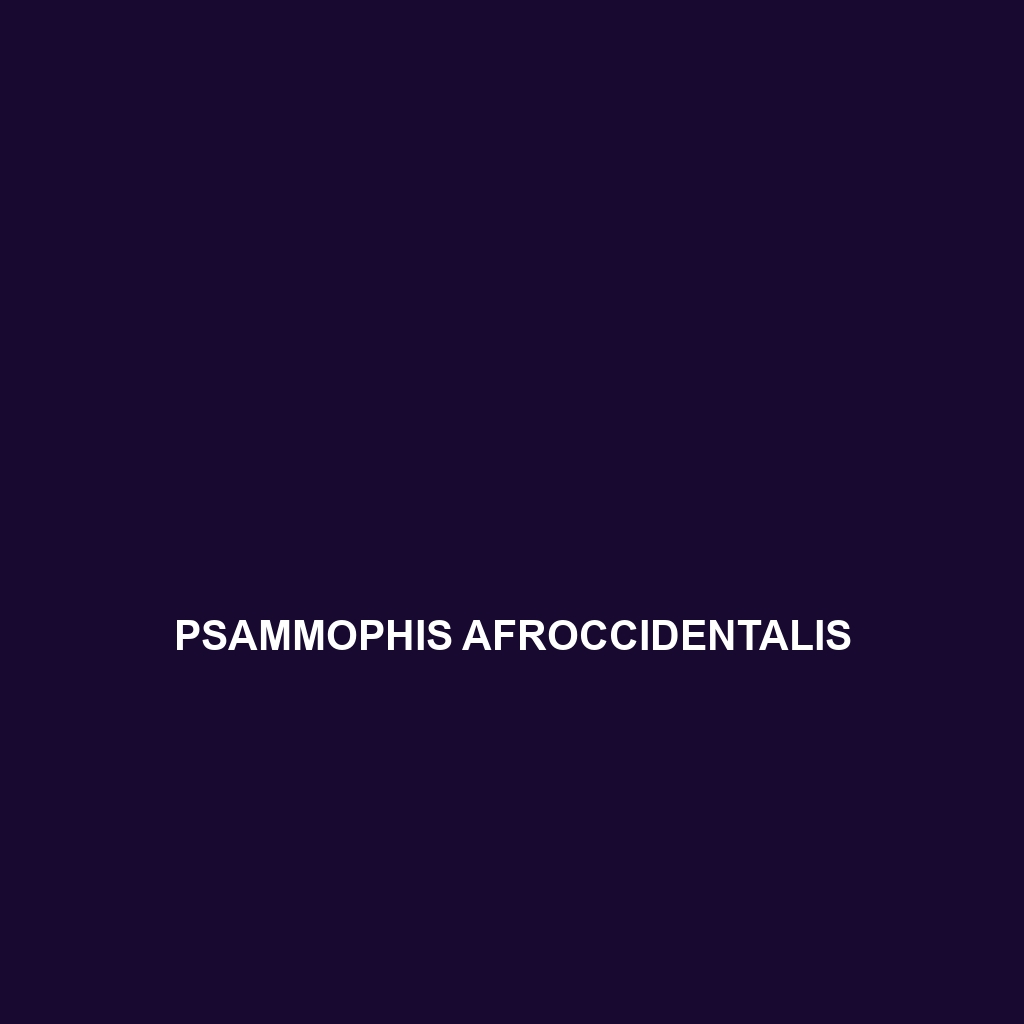<b>Psammophis punctulatus</b>, commonly known as the dotted sand snake, is a slender, diurnal snake that thrives in sandy habitats across sub-Saharan Africa. With its striking camouflage and versatile diet of small mammals, lizards, and insects, this resilient predator plays a vital role in maintaining ecosystem balance.
Tag: wildlife conservation
Psammophis praeornatus
<b>Psammophis praeornatus</b>, also known as the East African sand snake, is a slender, diurnal species found in savannas, grasslands, and wooded areas of East Africa. This agile predator primarily feeds on small rodents, lizards, and insects, playing a crucial role in maintaining ecological balance within its habitat.
Psammophis orientalis
The Psammophis orientalis, or Eastern Sand Snake, is a diurnal predator thriving in warm climates like savannas and grasslands. Known for its slender body, distinctive sandy coloration, and impressive speed, this non-venomous snake primarily preys on small mammals, birds, and lizards while playing a vital role in maintaining ecosystem balance.
Psammophis notostictus
<b>Psammophis notostictus</b>, also known as the striped sand snake, is a slender, diurnal reptile native to arid regions of northeastern Africa, notable for its striking light brown coloration with dark stripes. This carnivore primarily feeds on small rodents and lizards, playing a crucial role in maintaining ecological balance within its diverse habitats.
Psammophis leightoni
<p><b>Psammophis leightoni</b>, commonly known as Leighton's Sand Snake, is a slender, agile snake found in the arid regions of sub-Saharan Africa, known for its light brown coloration and dark stripes that provide effective camouflage. This carnivorous species primarily preys on small mammals and insects, playing a crucial role in maintaining ecosystem balance.</p>
Psammophis angolensis
<p><b>Psammophis angolensis</b>, or the Angolan sand snake, is a slender, diurnal predator native to sub-Saharan Africa, known for its distinctive coloration and adaptability to various sandy habitats. Typically reaching lengths of 1.2 to 1.5 meters, it primarily feeds on small vertebrates and plays a vital role in maintaining ecological balance in its environment.</p>
Psammophis afroccidentalis
<p><b>Psammophis afroccidentalis</b>, commonly known as the Western Sand Snake, is a slender, medium-sized snake measuring 70-110 cm, characterized by its sandy brown coloration and dark blotches. Primarily found in the dry uplands and savannas of Sub-Saharan Africa, this carnivorous snake is known for its swift movement, burrowing behavior, and crucial role in maintaining ecological balance.</p>
Psammophilus dorsalis
Psammophilus dorsalis, commonly known as the Indian Sand Boa, thrives in arid regions of India, featuring a slender body that reaches lengths of 40 to 60 cm, adorned with sandy yellow and brown coloration for excellent camouflage. Primarily insectivorous and known for its burrowing habits, this species plays a crucial role in its ecosystem by helping to control insect populations and serving as prey for larger animals.
Psammophilus blanfordanus
<strong>Blanford's Rock Lizard (Psammophilus blanfordanus)</strong> is a slender, carnivorous lizard found in temperate forests and savannas of India and Nepal. This diurnal species, measuring 15 to 20 cm, adapts well to rocky environments, showcasing vibrant coloration that aids in camouflage and an important role in regulating insect populations.
Psammodromus hispanicus
<b>Psammodromus hispanicus</b>, commonly known as the Iberian sand racer, is a slender, diurnal lizard found in the southeastern regions of Spain, thriving in warm, sandy habitats. With a striking coloration and impressive agility, it primarily feeds on insects and plays a crucial role in regulating local ecosystems.









